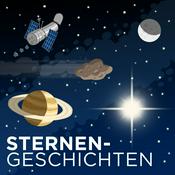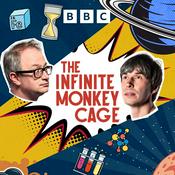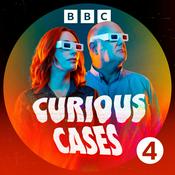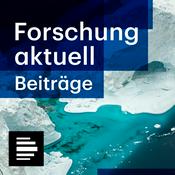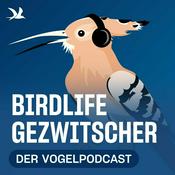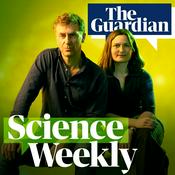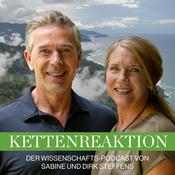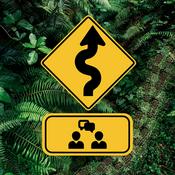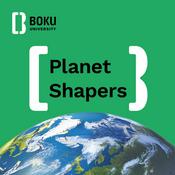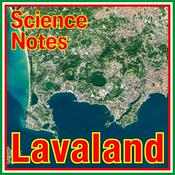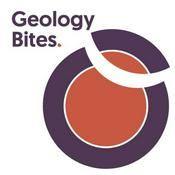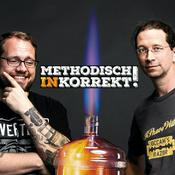The MapScaping Podcast - GIS, Geospatial, Remote Sensing, earth observation and digital geography
MapScaping
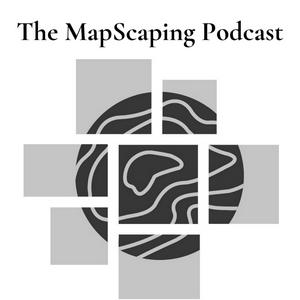
Neueste Episode
Verfügbare Folgen
5 von 246
- From Data Dump to Data ProductThis conversation with Jed Sundwall, Executive Director of Radiant Earth, starts with a simple but crucial distinction: the difference between data and data products. And that distinction matters more than you might think. We dig into why so many open data portals feel like someone just threw up a bunch of files and called it a day. Sure, the data's technically "open," but is it actually useful? Jed argues we need to be way more precise with our language and intentional about what we're building. A data product has documentation, clear licensing, consistent formatting, customer support, and most importantly - it'll actually be there tomorrow. From there, we explore Source Cooperative, which Jed describes as "object storage for people who should never log into a cloud console." It's designed to be invisible infrastructure - the kind you take for granted because it just works. We talk about cloud native concepts, why object storage matters, and what it really means to think like a product manager when publishing data. The conversation also touches on sustainability - both the financial kind (how do you keep data products alive for 50 years?) and the cultural kind (why do we need organizations designed for the 21st century, not the 20th?). Jed introduces this idea of "gazelles" - smaller, lighter-weight institutions that can move together and actually get things done. We wrap up talking about why shared understanding matters more than ever, and why making data easier to access and use might be one of the most important things we can do right now.--------45:39
- Reflections from FOSS4G 2025Reflections from the FOSS4G 2025 conference Processing, Analysis, and Infrastructure (FOSS4G is Critical Infrastructure) The high volume of talks on extracting meaning from geospatial data—including Python workflows, data pipelines, and automation at scale—reinforced the idea that FOSS4G represents critical infrastructure. AI Dominance: AI took up a lot of space at the conference. I was particularly interested in practical, near-term impact talks like AI assisted coding and how AI large language models can enhance geospatial workflows in QGIS. Typically, AI discussions focus on big data and earth observation, but these topics touch a larger audience. I sometimes wonder if adding "AI" to a title is now like adding a health warning: "Caution, a machine did this". Python Still Rules (But Rust is Chatting): Python remains the pervasive, default geospatial language. However, there was chatter about Rust. One person suggested rewriting QGIS in Rust might make it easier to attract new developers. Data Infrastructure, Formats, and Visualization When geospatial people meet, data infrastructure—the "plumbing" of how data is stored, organized, and accessed—always dominates. Cloud Native Won: Cloud native architecture captured all the attention. When thinking about formats, we are moving away from files on disk toward objects in storage and streaming subsets of data. Key cloud-native formats covered included COGs (Cloud Optimized GeoTIFFs), Zarr, GeoParquet, and PMTiles. A key takeaway was the need to choose a format that best suits the use case, defined by who will read the file and what they will use the data for, rather than focusing solely on writing it. The Spatial Temporal Asset Catalog (STAC) "stole the show" as data infrastructure, and DuckDB was frequently mentioned. Visualization is moving beyond interactive maps and toward "interactive experiences". There were also several presentations on Discrete Global Grid Systems (DGGS). Standards and Community Action Standards Matter: Standards are often "really boring," but they are incredibly important for interoperability and reaping the benefits of network effects. The focus was largely on OGC APIs replacing legacy APIs like WMS and WFS (making it hard not to mention PyGeoAPI). Community Empowerment: Many stories focused on community-led projects solving real-world problems. This represents a shift away from expert-driven projects toward community action supported by experts. Many used OSM (OpenStreetMap) as critical data infrastructure, highlighting the need for locals to fill in large empty chunks of the map. High-Level Takeaways for the Future If I had to offer quick guidance based on the conference, it would be: Learn Python. AI coding is constantly improving and worth thinking about. Start thinking about maps as experiences. Embrace the Cloud and understand cloud-native formats. Standards matter. AI is production-ready and will be an increasingly useful interface to analysis. Reflections: What Was Missing? The conference was brilliant, but a few areas felt underrepresented: Sustainable Funding Models: I missed a focus on how organizations can rethink their business models to maintain FOSS4G as critical infrastructure without maintainers feeling their time is an arbitrage opportunity. Niche Products: I would have liked more stories about side hustles and niche SAS products people were building, although I was glad to see the "Build the Thing" product workshop on the schedule. Natural Language Interface: Given the impact natural language is having on how we interact with maps and geo-data, I was surprised there wasn't more dedicated discussion around it. I believe it will be a dominant way we interact with the digital world. Art and Creativity: Beyond cartography and design talks, I was surprised how few talks focused on creative passion projects built purely for the joy of creation, not necessarily tied to making a part of something bigger.--------13:56
- Building a Community of Geospatial StorytellersKarl returns to the Mapscaping podcast to discuss his latest venture, Tyche Insights - a platform aimed at building a global community of geospatial storytellers working with open data. In this conversation, we explore the evolution from his previous company, Building Footprint USA (acquired by Lightbox), to this new mission of democratizing public data storytelling. Karl walks us through the challenges and opportunities of open data, the importance of unbiased storytelling, and how geospatial professionals can apply their skills to analyze and share insights about their own communities. Karl shares his vision for creating something akin to Wikipedia, but for civic data stories - complete with style guides, editorial processes, and community collaboration. Featured Links Tyche Insights: Main website: https://tycheinsights.com Wiki platform: https://wiki.tycheinsights.com Example project: https://albanydatastories.com Mentioned in Episode: USAFacts: https://usafacts.org QField Partner Program: https://qfield.org/partner Open Data Watch: (monitoring global open data policies)--------42:06
- I have been making AI slop and you should tooAI Slop: An Experiment in Discovery Solo Episode Reflection: I'm back behind the mic after about a year-long break. Producing this podcast takes more time than you might imagine, and I was pretty burnt out. The last year brought some major life events, including moving my family back to New Zealand from Denmark, dealing with depression, burying my father, starting a new business with my wife, and having a teenage daughter in the house. These events took up a lot of space. The Catalyst for Return: Eventually, you figure out how to deal with grief, stop mourning the way things were, and focus on the way things could be. When this space opened up in my life, AI came into the picture. AI got me excited about ideas again because for the first time, I could just build things myself without needing to pitch ideas or spend limited financial resources. On "AI Slop": I understand why some content is called "slop," but for those of us who see AI as a tool, I don't think the term is helpful. We don't refer to our first clumsy experiments with other technologies—like our first map or first lines of code—as slop. I believe that if we want to encourage curiosity and experimentation, calling the results of people trying to discover what's possible "slop" isn't going to help. My AI Experimentation Journey My goal in sharing these experiments is to encourage you to go out and try AI yourself. Phase 1: SEO and Content Generation My experimentation began with generating SEO-style articles as a marketing tool. As a dyslexic person, I previously paid freelancers thousands of dollars over the years to help create content for my website because it was too difficult or time-consuming for me to create myself. Early Challenges & Learning: My initial SEO content wasn't great, and Google recognized this, which is why those early experiments don't rank in organic search. However, this phase taught me about context windows, the importance of prompting (prompt engineering), and which models and tools to use for specific tasks. Automation and Agents: I played around with automation platforms like Zapier, make.com, and n8n. I built custom agents, starting with Claude projects and custom GPTs. I even experimented with voice agents using platforms like Vappy and 11 Labs. Unexpected GIS Capabilities: During this process, I realized you can ask platforms like ChatGPT to perform GIS-related data conversions (e.g., geojson to KML or shapefile using geopandas), repro data, create buffers around geometries, and even upload a screenshot of a table from a PDF and convert it to a CSV file. While I wouldn't blindly trust an LLM for critical work, it's been interesting to learn where they make mistakes and what I can trust them for. AI as a Sparring Partner: I now use AI regularly to create QGIS plugins and automations. Since I often work remotely as the only GIS person on certain projects, I use AI—specifically talking to ChatGPT via voice on my phone—as a sparring partner to bounce ideas off of and help me solve problems when I get stuck. Multimodal Capabilities: The multimodal nature of Gemini is particularly interesting; if you share your screen while working in QGIS, Gemini can talk you through solving a problem (though you should consider privacy concerns). The Shift to Single-Serve Map Applications I noticed that the digital landscape was changing rapidly. LLMs were becoming "answer engines," replacing traditional search on Google, which introduced AI Overviews. Since these models no longer distribute traffic to websites like mine the way they used to, I needed a new strategy. The Problem with Informational Content: Informational content on the internet is going to be completely dominated by AI. The Opportunity: Real Data: AI is great at generating content, but if you need actual data—like contours for your specific plot of land in New Zealand—you need real data, not generated data. New Strategy: My new marketing strategy is to create targeted, single-serve map applications and embed them in my website. These applications do one thing and one thing only, using open and valuable data to solve very specific problems. This allows me to rank in organic search because these are problems that LLMs have not yet mastered. Coding with AI: I started by using ChatGPT to code small client-side map applications, then moved to Claude, which is significantly better than OpenAI's models and is still my coding model of choice. Currently, I use Cursor AI as a development environment, swapping between Claude code, OpenAI's Codex, and other models. A Caveat: Using AI for coding can be incredibly frustrating. The quality of the code drops dramatically once it reaches a certain scale. However, even with flaws, it’s a thousand times better and faster than what I could do myself, making my ideas possible. Crucially, I believe that for the vast majority of use cases, mediocre code is good enough. Success Story: GeoHound After practicing and refining my methods, I decided to build a Chrome extension. Every GIS professional can relate to the pain point of sifting through HTTP calls in the developer tools networking tab to find the URL for a web service to use in QGIS or ArcGIS. The Impossible Idea Made Possible: I had pitched this idea to multiple developers in the past, who were either uninterested or quoted between $10,000 and $15,000 to build it. The AI Result: Using AI, I had a minimum viable Chrome extension—GeoHound—that filtered out common geo web services within 3 hours. It took a few days of intermittent work before it was published to the Chrome and Edge web stores. Current Use: GeoHound has thousands of users (my own statistics suggest closer to or over 3,000 users, compared to the 1,000 shown on the Chrome store). While not perfect, it is clearly good enough, and this was something that was impossible for me just six months ago. My Point: Now is the Time to Experiment AI is here, and it will lead to profound change. Experimenting with it is vital because it will: Help you develop the skills and knowledge needed to meet the needs of the people you serve. Help you better understand what is hype and what is not, allowing you to decipher which voices to listen to. We are moving from a world where information is ubiquitous to a world where knowledge is ubiquitous. Now is the time to be making sloppy mistakes. Don't let perfection stop you from learning how to make stuff that is going to be good enough. If your work consists of repetitive tasks that follow step-by-step recipes, that's going to be a tough gig going forward. Long-term, there will be new opportunities, but you need to be experimenting now to be in a position to take advantage of them. Resources Mentioned You will find a list of the tools I've been experimenting with in the show notes. Automation: make.com, n8n, Zapier Voice/Agents: 11 Labs, Vappy, custom GPT (MCP servers) Coding Models: Claude (current choice), OpenAI's Codex, ChatGPT Development Environment: Cursor AI LLMs/Multimodal: Gemini (studio.google.com) Browser Extension: GeoHound (for Chrome and Edge) https://chromewebstore.google.com/detail/nooldeimgcodenhncjkjagbmppdinhfe?utm_source=item-share-cb If you build anything interesting with these tools, please let me know! I'd love to hear about your own experiments.--------18:56
- Scribble: An AI Agent for Web MappingJonathan Wagner, CEO of Scribble Maps, is back on the podcast, and this time we're talking about Scribble—an AI agent he's built into his platform. Not a chatbot, an agent. There's a difference, and we get into that. https://mapscaping.com/podcast/the-business-of-web-maps/ So far, Scribble has access to 140 tools. It can view your map, select tools, build plugins, fetch data, and handle onboarding and customer education. But here's the thing—should you care? I think you should, because we're going to see more and more of these things. And whether you like it or not, for a lot of people, this is going to be the way they interact with geospatial data. I don't think we can put the genie back in the bottle. I personally, I'm not entirely sure I would if I could. Yeah, sure, there's a lot of uncertainty around what these things can do and how they're going to impact us. I get that. I feel it too. But we can't afford to stick our heads in the sand and pretend like it's not happening. In this conversation, Jonathan walks through why he built Scribble (spoiler: his wife was expecting and he needed to solve an onboarding problem), the real risks of adding AI to your product, and the technical decisions behind using Gemini over OpenAI. We also talk about privacy concerns, the Model Context Protocol (MCP), and what this all means for the future of GIS. We touch on the QGIS MCP server, the democratization of mapping tools, and when maps aren't actually the answer. It's an honest look at where we are with AI agents in geospatial, from someone who's actually building one. https://en.wikipedia.org/wiki/Lojban https://github.com/jjsantos01/qgis_mcp How's that?--------48:39
Weitere Wissenschaft Podcasts
Trending Wissenschaft Podcasts
Über The MapScaping Podcast - GIS, Geospatial, Remote Sensing, earth observation and digital geography
A podcast for geospatial people. Weekly episodes that focus on the tech, trends, tools, and stories from the geospatial world. Interviews with the people that are shaping the future of GIS, geospatial as well as practitioners working in the geo industry.
This is a podcast for the GIS and geospatial community subscribe or visit https://mapscaping.com to learn more
Podcast-WebsiteHöre The MapScaping Podcast - GIS, Geospatial, Remote Sensing, earth observation and digital geography, Sternengeschichten und viele andere Podcasts aus aller Welt mit der radio.at-App

Hol dir die kostenlose radio.at App
- Sender und Podcasts favorisieren
- Streamen via Wifi oder Bluetooth
- Unterstützt Carplay & Android Auto
- viele weitere App Funktionen
Hol dir die kostenlose radio.at App
- Sender und Podcasts favorisieren
- Streamen via Wifi oder Bluetooth
- Unterstützt Carplay & Android Auto
- viele weitere App Funktionen


The MapScaping Podcast - GIS, Geospatial, Remote Sensing, earth observation and digital geography
Code scannen,
App laden,
loshören.
App laden,
loshören.
